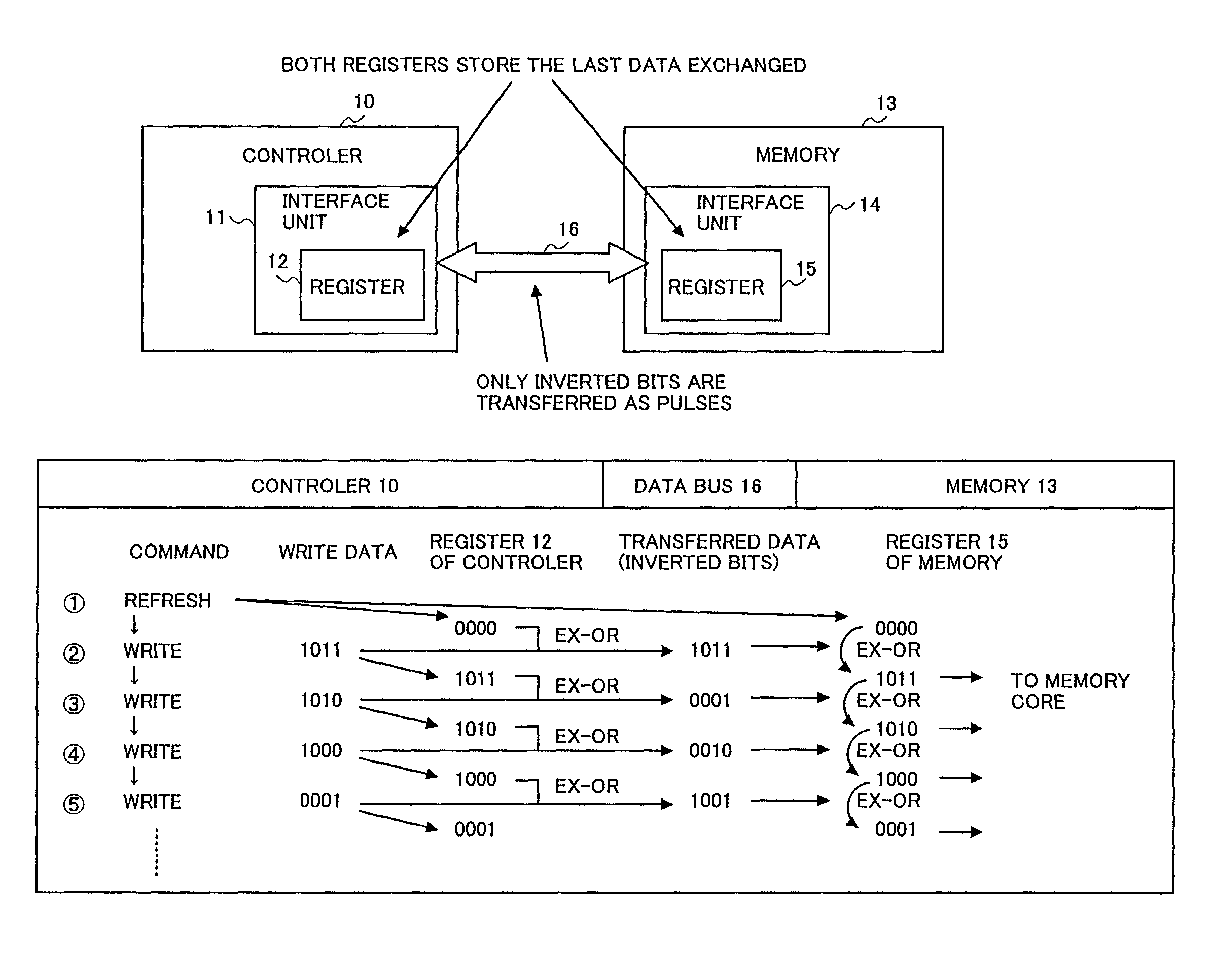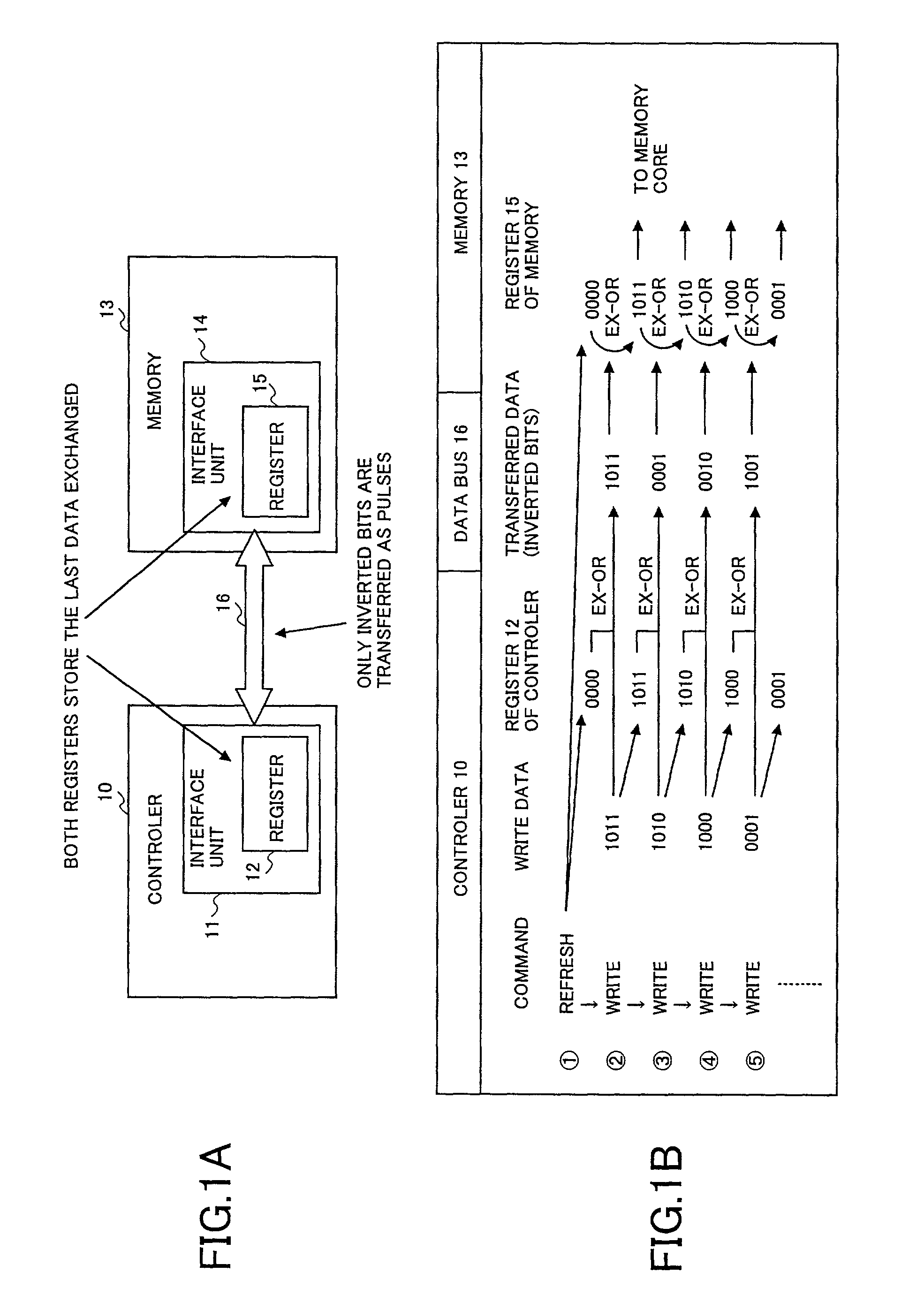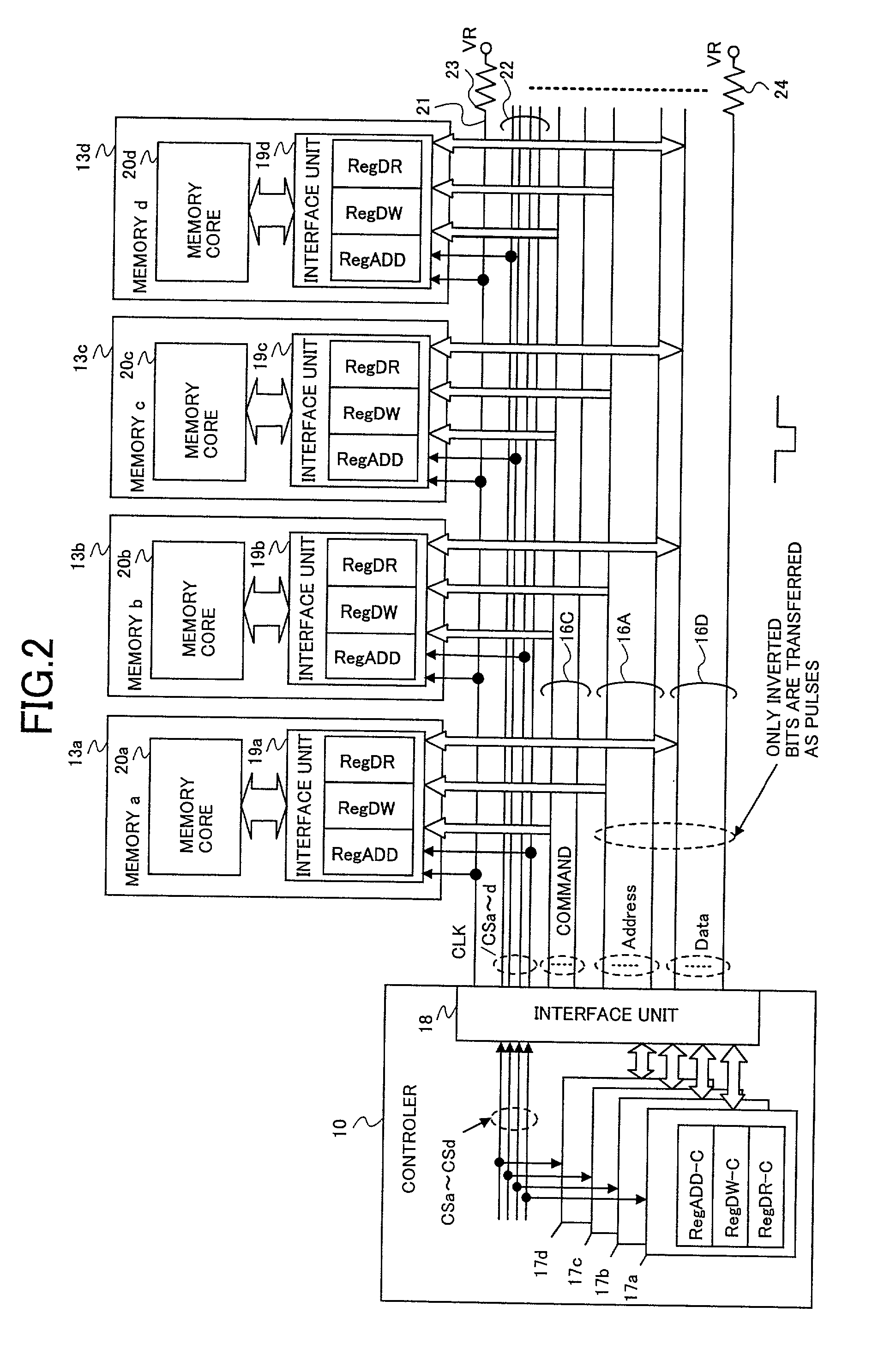Semiconductor device with circuitry for efficient information exchange
a technology of information exchange and semiconductor devices, applied in the direction of memory adressing/allocation/relocation, digital storage, instruments, etc., can solve the problems of uncompressed data being redundant, uncompressed data being transferred inefficiently, and the need to transfer uncompressed data
- Summary
- Abstract
- Description
- Claims
- Application Information
AI Technical Summary
Benefits of technology
Problems solved by technology
Method used
Image
Examples
first embodiment
of Data Input Unit of Memory
[0078]The first embodiment of the data input unit provided in the interface units 19a-19d of the memories 13a-13d will be described next. The first embodiment is a data input unit which inputs external data in synchronism with a clock signal.
[0079]Each interface unit 19a-19d has a data input unit which receives data (Write Data) from the data bus 16D. FIG. 3 shows the first embodiment of the data input unit. The data input unit includes a clock generating unit 25, a command input and decode unit 26, an OR gate 27, and “n” data input units 281-28n where “n” is a natural number. The clock generating unit 25 receives a clock signal from a clock line 21, generates an internal clock CLK1, and sends it to the command input circuit / command decode unit 26 and the data input units 281-28n. The command input circuit / command decode unit 26 is turned ON (Enable mode) when the unit receives a chip select signal CS (any one of CSa-CSd), receives a command through the c...
second embodiment
of Data Input Unit of Memories
[0091]The second embodiment of the data input unit provided in the interface units 19a-19d of the memories 13a-13d will be described below.
[0092]FIG. 6 is a block diagram showing the configuration of the data input unit according to the second embodiment of the present invention. Each unit which is identical to one shown in FIG. 3 is referred to by the same numeral as used in FIG. 3. The second example is a data input unit which is activated by a low-edge, which is an edge observed when voltage goes down to LOW from HIGH.
[0093]Data input units 1281-128n are provided instead of the data input units 281-28n shown in FIG. 3. In FIG. 6, however, only the data input unit 1281 is shown. A ½ frequency divider 44 is provided. The divider divides an internal clock CLK1 by a ratio of 2, and generates two internal clock signals CLK2 and / CLK2, which are complementary to each other.
[0094]The data input unit 1281 includes a comparator 29, an inverter 46, an input la...
third embodiment
of Data Input Unit Provided in Memory
[0104]FIG. 9 shows the third embodiment the data input unit provided in the interface units 19a-19d of the memories 13a-13d. A data input unit to be described as the third embodiment is a unit which acquires data IN at the rise of a chip select signal “CS”. Common components to both FIG. 3 and FIG. 9 are referred to by the same numerals.
[0105]Compared with the circuit described in FIG. 6, the circuit shown in FIG. 11 includes an input latch unit 60, instead of the input latch unit 45 in FIG. 6, and does not include the ½ divider 44 shown in FIG. 6. The input latch 60 includes a comparator 48, a latch 49, and a delay circuit 50. While a chip select signal “ / CS” (CS1) is ON (Input Waiting Period), the input latch 60 outputs a signal N3 to the pulse generator 31 in response to a HIGH edge of the inverted input data “ / IN” through the inverter 46.
[0106]FIG. 12 is a timing chart illustrating the operation of the circuit shown in FIG. 11. The first data...
PUM
 Login to View More
Login to View More Abstract
Description
Claims
Application Information
 Login to View More
Login to View More - R&D
- Intellectual Property
- Life Sciences
- Materials
- Tech Scout
- Unparalleled Data Quality
- Higher Quality Content
- 60% Fewer Hallucinations
Browse by: Latest US Patents, China's latest patents, Technical Efficacy Thesaurus, Application Domain, Technology Topic, Popular Technical Reports.
© 2025 PatSnap. All rights reserved.Legal|Privacy policy|Modern Slavery Act Transparency Statement|Sitemap|About US| Contact US: help@patsnap.com



